I went back to the D4 and D810 data sets and ran the ISOlessness test on them without any data set scrubbing.
Here are the results with a target mean of 0.01 for ISO 6400 for the D4 and ISO 4000 for the D810 (the tested ISOs are two-thirds of a stop apart because the cameras’ base ISOs are two thirds of a stop apart.
There are a couple of things to note. First, the absolute SNRs at high ISOs are higher for the D4, even though the ISOs are higher fo the D4. Remember that the D4 has fewer than half as many pixels as the D810, though. Second, at low ISOs, the D810 has better performance than the D4. The D810 is more nearly ISOless.
Doubling the mean values:
More of same.
Doubling the mean again:
The D4 maintains its half-stop advantage at high ISOs, and the D810 curves are approaching ruler-flatness.
And finally, at high-ISO means of middle gray:
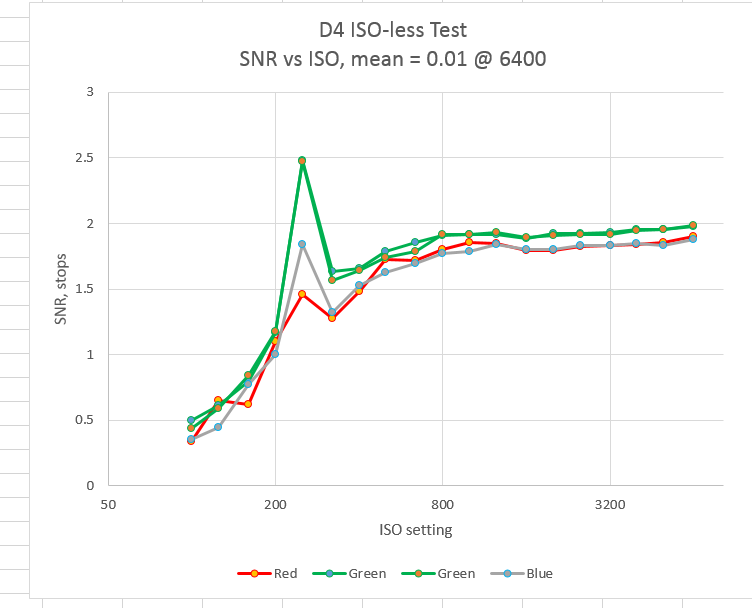
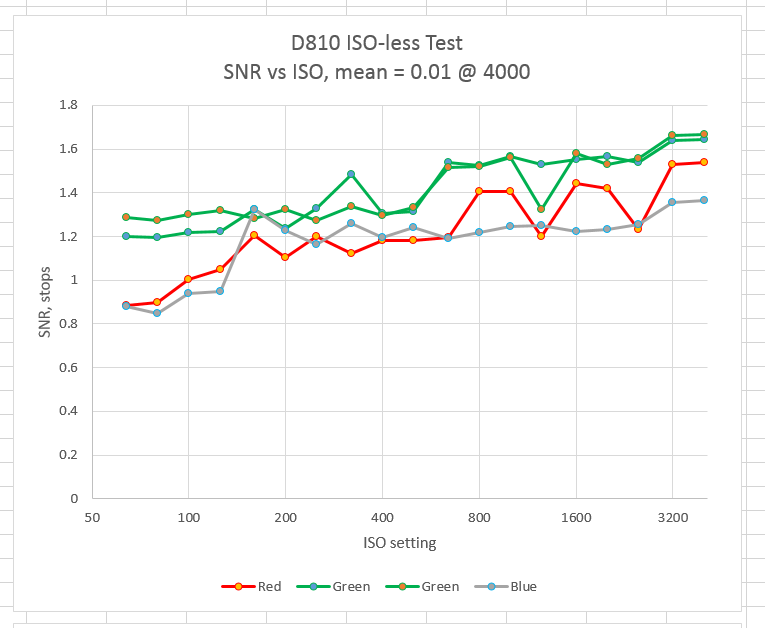
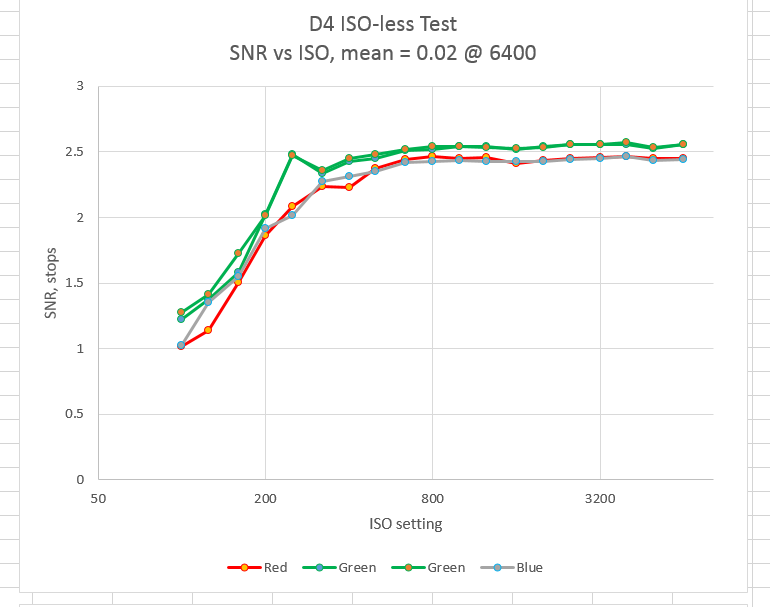
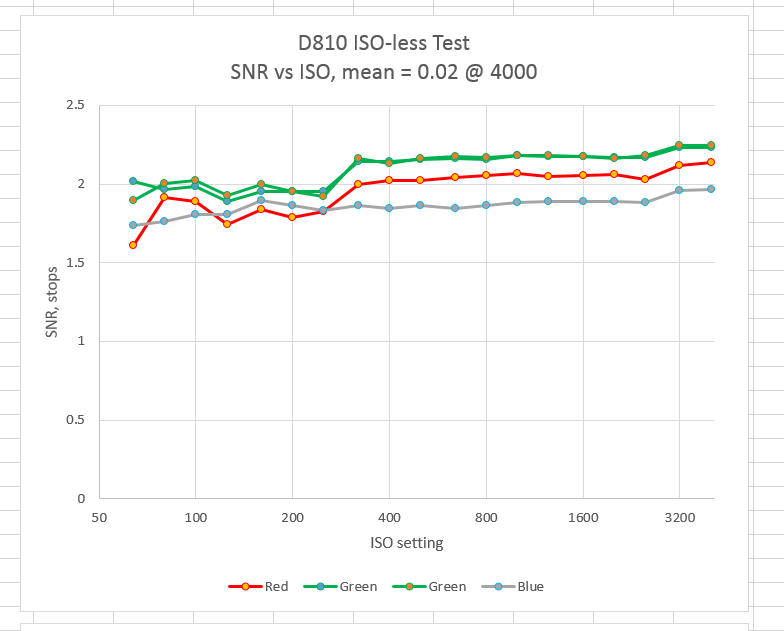
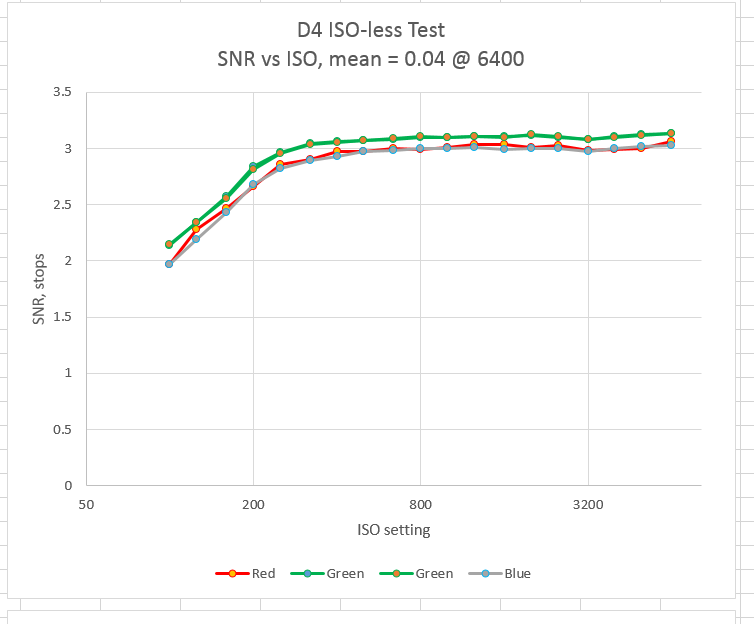
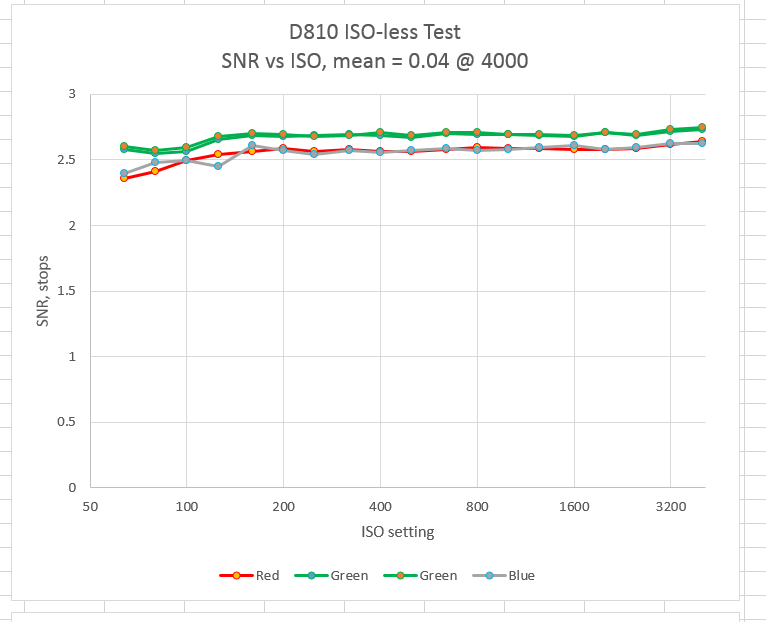
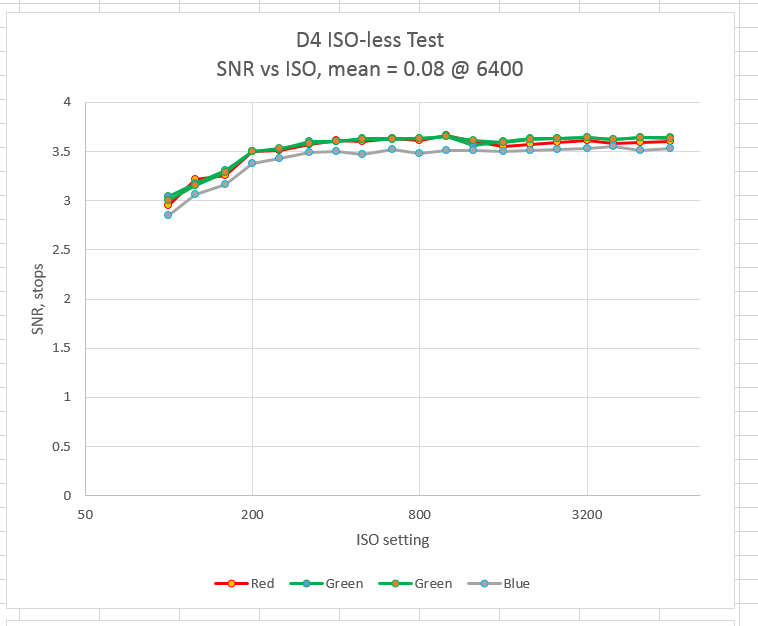
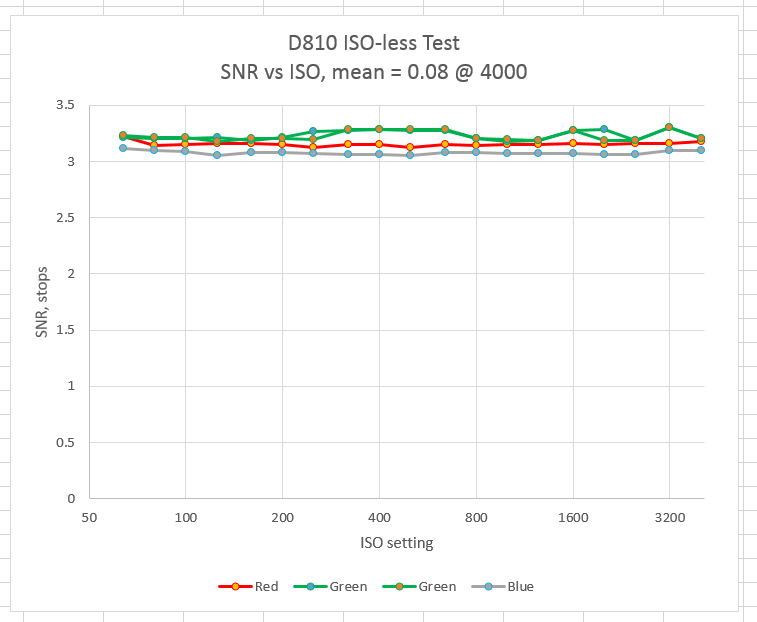
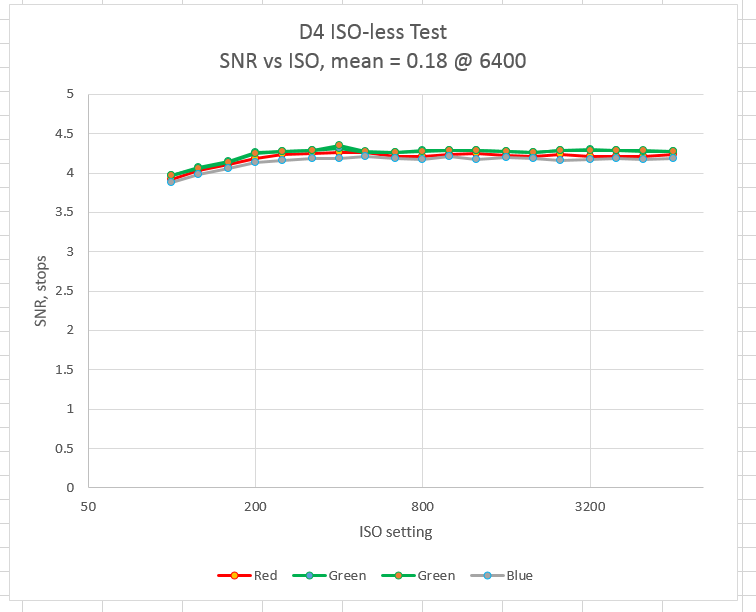
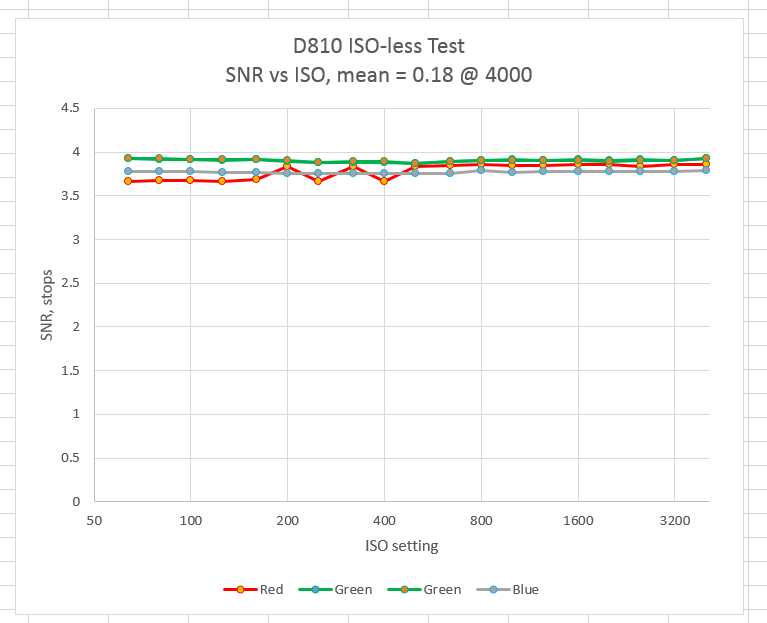
Leave a Reply